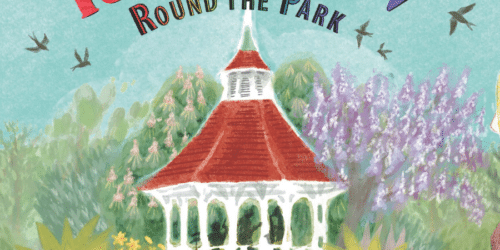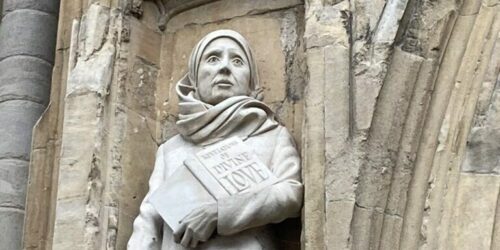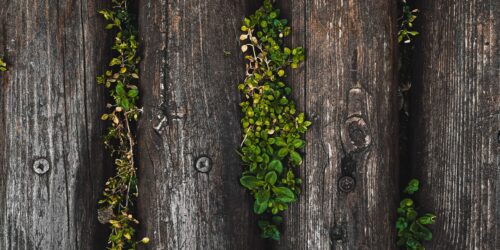
Discover a series of poems and reflections on rivers in Norwich and Melbourne UNESCO Cities of Literature, written by writer and arts producer Daisy Henwood during a virtual residency.
Daisy’s affecting poems bridge the gap between the two cities, Melbourne viewed from afar, through verses on rivers, landscapes and other unique commonalities.
Daisy’s residency formed part of a virtual residency offer from Melbourne City of Literature. Daisy was paired with Werribee River Association to connect the story of their river to others in the world.


Read Daisy’s introduction and first poem below, and discover the full collection at the link at the bottom of this blog.
Following Three Rivers
Over the course of this project, I’ve learn about tawny frogmouths and river red gums, kangaroo apples and Pacific black ducks. I’ve also learnt about road building and community garden projects, sewage treatment plants, agriculture, and fences to keep out dirt bikes. Going into it, I expected myself to be writing almost exclusively about nature, picking out plants and animals or places and thinking about them. But when it came down to it, I was just as drawn to the human experience of rivers. It’s one thing to relate to a river that’s tranquil and green, but it’s another thing to relate to that same river when it’s running past empty factory buildings, chemical plants, and housing developments. What happens when the river isn’t only “beautiful”? How do we relate to places beyond the usual mode of “looking at pretty things”?
Writing about a river you’ve never been to is a funny thing. Everything you’d usually rely on for a sense of a place – walking through it, looking around, listening,
spending time there – is impossible, so you have to find new things to rely on. Luckily, there were plenty of other resources to draw on. The staff at the Werribee River Association told me all about their river. I was taken on two riverside walks over zoom, and led two virtual workshops with Werribee residents. Everyone I spoke to was generous with their stories and enthusiastic about their home, and I managed to build a picture of what the Werribee River is like.
And although the Werribee River a ten-thousand-mile plane ride away from my home in Norwich, UK, that picture was in lots of ways similar to my experience of the Wensum and Yare rivers that run through the county of Norfolk. Like the land around the Werribee River, Norfolk is known for being flat. But like the Werribee River’s viewsof the You Yangs and the K Road Cliffs, Norwich has hills. When I showed a picture I’d taken of a calm spot on the River Yare in a workshop, the participants told me the sky looked as big as their sky, and we shared what it’s like to live in a place where the view is always at least eighty per cent sky. I thought I’d end up writing mostly about the River Yare, which runs below Norwich and out into the countryside of East Norfolk, and which I always thought I related to more. I thought I’d be pondering how the Yare and the Werribee share a kind of tranquillity. And they do. But the Wensum – which runs through the middle of Norwich – made some more interesting connections. It gave me space to explore the more complicated relationships we might have with rivers in our cities.
It is winter here. As I was watching the weather warm up in Melbourne, it was dramatically cooling down in Norwich. There’s something wonderfully jarring about being on a zoom call at 7.00am on a -1°C day and watching a group of writers walk down to the river in sandals on a balmy evening on the other side of the world. It made me want to think at once about these rivers as both endlessly sunny and beautiful, and as bleak and built up and exploited. Because they are always both. And, as I found on my zoom calls, in conversations, and through reading about and listening to stories of the Werribee, Wensum, and Yare rivers, even when it looks like there’s nothing to redeem a part of the river, even when it looks like there’s no way of looking beyond or around a negative human impact, there is something beautiful to find.
This is the kind of hopefulness that emanated from everyone I spoke to about their local river. I chatted with workshop participants and WRA staff about the Werribee, and I spoke to people at the National Centre for Writing and Norfolk Museum Service, as well as some fellow Norwich residents, about the Wensum and the Yare. Everyone had something personal and hopeful to say. The first poem here, ‘Instructions for Interacting with a River,’ is made up of these reflections, by Fatima Measham, Jess Fairfax, Vicki Fairfax, Melinda Lloyd, Charlotte Williamson, John Forrester, Lisa Field, Peggy Hughes, Chris Gribble, Lewis Buxton, and Fiona Ashley. That poem, and this project as a whole, has opened me up to new ways of interacting with and appreciating rivers not just as things to visit and places to look at, but as integral parts of our everyday lives, drifting along often unseen and underappreciated. This project has made me actively love the rivers that flow through my city, and I take more and more notice of those sluggish streams every time I walk through town. This project has also made me love a river that flows through a city ten thousand miles away, that I have never even been to. And that, I think, is something worth writing about.
Instructions for Interacting with a River
1. Walk slowly. Listen and feel.
2. Stop and sit a little while.
3. Ask yourself, where is the sun? How are the sun and river talking to one
another?
4. Approach her on her own terms.
5. Go at night. Watch for bats. Count how many times they dip in the glow.
6. Hold you hard! The harnser might be at home.
7. Be sure to visit often; soak it up with your eyes and ears; allow yourself to
become its friend.
8. Record the changes.
9. Go to the ugly sections. Pick up crisp packets and cigarette butts. Look for
otters.
10. Speak out loud what you might need to say. Tell the bats, or the bugs, or the
river.
11. Cry a little. What’s a few more drops?
12. Walk silently. Focus on all the sounds around you.
13. Be one with the river community.
14. Don’t put anything in there you wouldn’t like to swim through.
15. Let nature expand your sense of being.
16. Walk.
17. You have to return.
18. Try not to fall in.
Read the whole collection →
 Daisy Henwood is a writer and arts producer based in Norwich. Her work has appeared in Poetry Wales, Ink Sweat and Tears, Poetry Birmingham and Under the Radar. She received her PhD in environmental literature from UEA in 2020. She teaches writing workshops for all ages and has worked with National Centre for Writing, Young Norfolk Arts, New Routes, Norfolk Wildlife Trust and the Norfolk Museums Service. She was writer-in-residence at Norwich Castle and virtual writer-in-residence for the Werribee River Association in Melbourne in 2022. She is the co-director of TOAST Poetry.
Daisy Henwood is a writer and arts producer based in Norwich. Her work has appeared in Poetry Wales, Ink Sweat and Tears, Poetry Birmingham and Under the Radar. She received her PhD in environmental literature from UEA in 2020. She teaches writing workshops for all ages and has worked with National Centre for Writing, Young Norfolk Arts, New Routes, Norfolk Wildlife Trust and the Norfolk Museums Service. She was writer-in-residence at Norwich Castle and virtual writer-in-residence for the Werribee River Association in Melbourne in 2022. She is the co-director of TOAST Poetry.
Image (c) Katherine Mager.
You may also like...
‘Rainbow Round the Park’ by Amanda Addison and Hsuan Pai
Read our Stories of Cities, Cities of Stories virtual residents’ wonderful picture book, exploring shared community, the use of fabrics from all over the world and the seasons turning.

10th August 2023
‘Revelation’: a commission by Megan Bradbury
Discover Megan Bradbury’s creative commission exploring writing, memories of Norwich, and the legendary Norwich anchoress

7th March 2023
‘In the Language Slipstream’ by Crispin Rodrigues
A commission from our 2022 virtual resident on code-switching, speech acts and biracial-bilingual identity

15th February 2023






